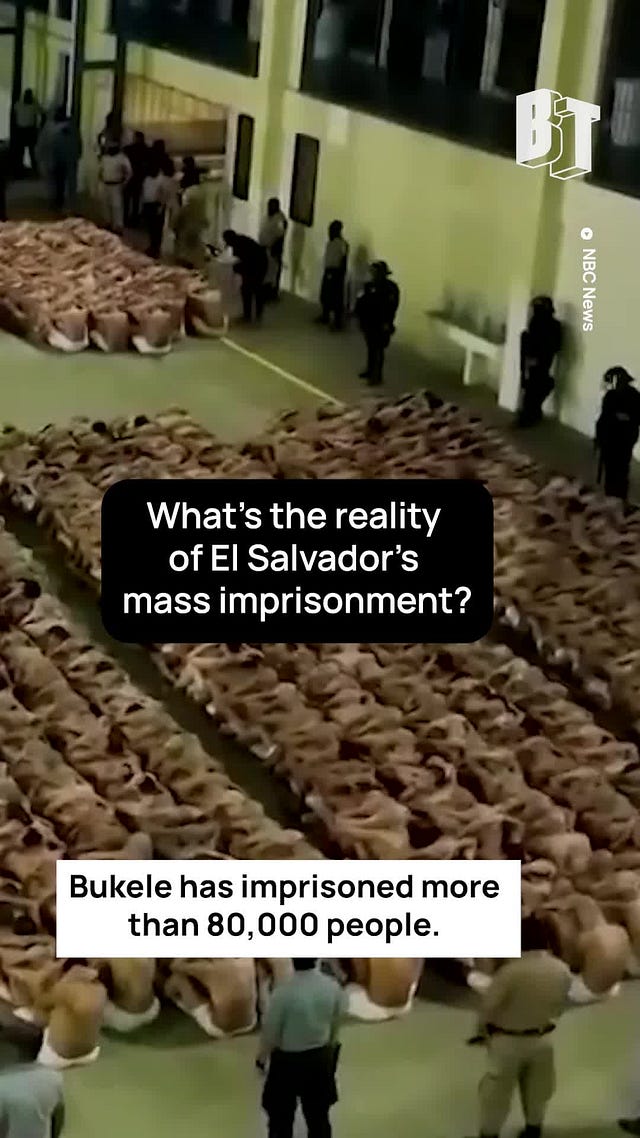Remembering the '80s Sanctuary Movement
In my latest for NACLA, I wrote about the importance of the 1980s anti war sanctuary movement as Trump dismantles its legacy.
Dear readers,
In my debut for the North American Congress for Latin America (NACLA), I wrote about the importance of remembering the ‘80s sanctuary movement. My family came to the U.S. during a time when the wars in Central America caused righteous outrage and solidarity to shield refugees from the immigration gestapo, then known as INS.
I’ll never forget a story my mother tells about being late for work one day at a kitchen in early 1980s Los Angeles. Had she been on time, she would have been caught in a raid and potentially sent back to war in El Salvador. Many of her coworkers were rounded up; some she never saw again, while others immigrated once more, crossing through Tijuana within days or weeks, undeterred and back on the clock. A worksite raid could easily be an anecdote from today. In recent weeks, thousands of immigrants have been detained and many deported in Immigration and Customs Enforcement (ICE) raids across the country. READ MORE
This piece was inspired by a poem by Sonia Sanchez that captures the international solidarity that activists felt with El Salvador in the 1980s. The history books and official curricula often omit this chapter of history, when solidarity with Central America was a popular sentiment and movement where everyday people in the U.S. organized to defy the federal government’s attack on our communities.
In her 1985 book I've Been a Woman: New and Selected Poems, the poet Sonia Sanchez includes a poem titled “MIA's (missing in action and other atlantas),” in which she connects the dots between the oppression of racism in Atlanta, apartheid-era Johannesburg, South Africa, and U.S. involvement in El Salvador. Of El Salvador, she wrote:
redwhiteandblue guns splinter the
nite with glass
redwhiteandblue death squads running on borrowed
knees cascading dreams
quiero ser libre
pues libre naci
I say
quiero ser libre
pues libre naci
EL SALVADOR NEWS
Here’s a selection of news that can help with understanding the evolving situation under Nayib Bukele’s unconstitutional presidential term in El Salvador.
Al-Jazeera English: El Salvador offers to jail US convicts in ‘unprecedented’ proposal
President Bukele is shamefully trying to broker a deal with U.S. Secretary of State Marco Rubio to house U.S. citizens in El Salvador’s mega prisons.El País: To live and die for gold: Metals mining returns to El Salvador
In 2017, El Salvador was the only country to ban metallic mining, but now the Bukele regime has recently overturned that law and what’s left of the country’s little drinking water is at risk for contamination.
Diaro Co-Latino: [Spanish] CISPES demands freedom for leaders of the La Floresta Community.
The Committee in Solidarity with the People in El Salvador (CISPES) is calling for the liberation of a land defenders Medardo Arnoldo Rodríguez and Alejandra Jeannette Cañas from the La Floresta community in San Juan Opico, La Libertad.Venture Capital Strategy: El Salvador: A case study in crypto colonialism
As tech fascism takes over the U.S., we can look to El Salvador under Bukele as a case study of what selling your country to tech billionaires and stripping it for parts looks like. It’s not good.
Breakthrough News: [Video] What’s the reality of El Salvador’s mass imprisonment?
 @btnewsroomEl Salvador's President Nayib Bukele offered to incarcerate U.S. prisoners and detainees. The country now has the highest prison rate in the world, and by its own admission, 10% of those arrested are not guilty. BT spoke with families in the Movement of Victims of the Regime in El Salvador @MOVIR. They say Bukele's "war on gangs" is giving cover to a total dictatorship that targets the poor most of all.
@btnewsroomEl Salvador's President Nayib Bukele offered to incarcerate U.S. prisoners and detainees. The country now has the highest prison rate in the world, and by its own admission, 10% of those arrested are not guilty. BT spoke with families in the Movement of Victims of the Regime in El Salvador @MOVIR. They say Bukele's "war on gangs" is giving cover to a total dictatorship that targets the poor most of all.Tiktok failed to load.
Enable 3rd party cookies or use another browser
Thanks for reading,
Daniel



